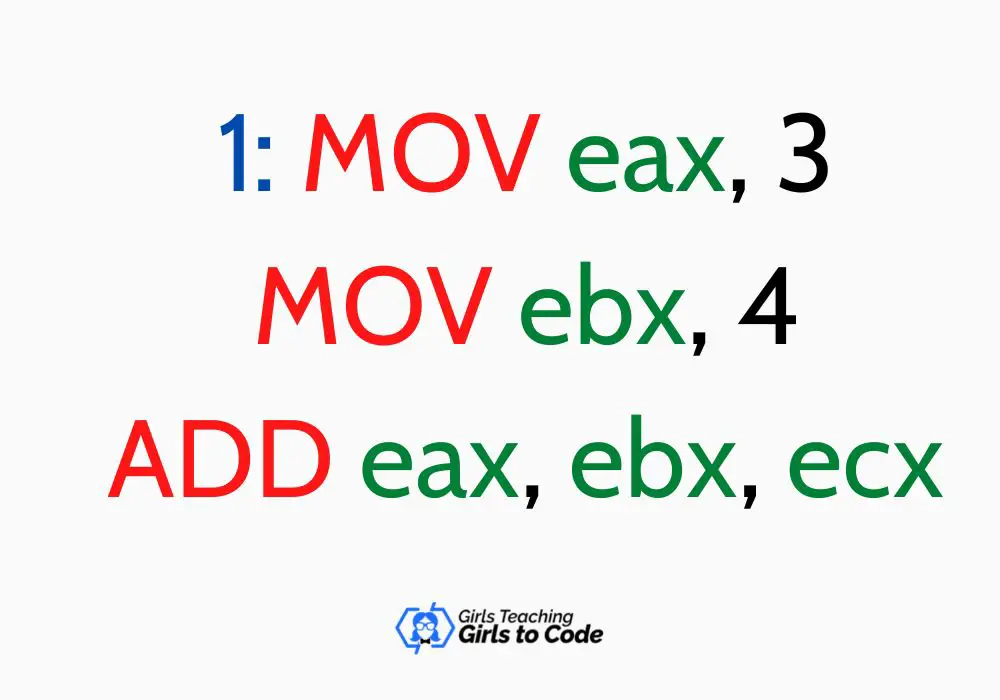Assembly is both challenging and picky. You must pay great attention to the hardware you use, mainly the CPU and its registers.
Also, you must become familiar with its instruction set and quirks, such as which operations sets and which flags.
For example, does simply loading a register set flags, or must you act on it first?
In this article, find out how complex assembly programming is and what a learning curve for such programming is. We will start with an introduction to assembly so if you are already familiar with it, skip the first few paragraphs!
Advertising links are marked with *. We receive a small commission on sales, nothing changes for you.
What Is Assembly Programming?

A low-level programming language called an assembly language is designed to interface directly with a computer’s hardware.
Assembly languages are intended to be intelligible by people, in contrast to machine language, which uses binary and hexadecimal characters.
So, for example, programming languages such as Python and JavaScript have to be connected through programming languages like assembly code.
Only then can you develop software applications in programming languages like Python and JavaScript.
How Does The Assembly Programming Work?
If you want to learn assembly language, you have to know how it works.
The most fundamental instructions a computer executes are binary codes, which are made up of ones and zeros.
In essence, these shortcodes serve as the building blocks of “machine language.” The machine language is the most basic type of computer language.
It goes without saying that no human being could create current software systems by directly coding ones and zeros.
Instead, human programmers must depend on many abstraction levels that might help them express their instructions in a way that is more natural to people.
Modern programmers specifically give instructions in “high-level languages,” which make use of recognizable logical operators. Those operators are:
- “And,”
- “Or,”
- “Else,” and
- Syntaxes like phrases and full sentences in English.
Example of Assembly Coding in the Real World
Assembly language is still used today to directly manipulate hardware, gain access to specific processor instructions, or solve serious performance problems.
So, the assembly programming is used in:
- device drivers,
- low-level embedded systems, and
- real-time systems.
In assembly programming, there are a few essential components. Those are:
- Syntax
- Label
- Command
- Instruction
- Directive
- Macro
- Mnemonic
Now, read the explanations while looking at the code below.

1: → This is called a label, and it tells the computer where to begin the operation.
MOV&ADD → This is called a mnemonic command. It is there to tell the computer to move the number three (in this example) into a part of the computer that lets it be a variable.
Eax, ebx, ecx → These letters are called variables.
- The first code will load number three into “eax” variable.
- The second code will load number four into the variable/register “ebx.”
- The last code will add both “ebx” and “eax” which turns into seven (3+4), and it is stored in “ecx”.
Hopefully, this makes sense! Read through it a couple of times until it fully sets in!
This should also help you gain perspective on the learning curve of the assembly language.
Is Assembly the Hardest Programming Language?
It will take a little longer to learn assembly than one of the other languages similar to, for example, Pascal.
Reading and comprehending the assembly is challenging if you’re not fully in it.
Some surveys say that, indeed, Assembly is the hardest to learn. This language is highly convoluted and difficult to comprehend.
It is also exceedingly challenging to recall its syntax, for example.
In addition, it can only accept one kind of application since other computer architectures are incompatible with it.
Also, Long Assembly Language applications need more memory or hard drive capacity to execute correctly, as we said earlier. So, buckle up and save money to buy proper equipment.
Is Assembly Easier to Learn Than C?
Compared to Assembly, C is simpler to program in, that’s for sure.
C is simpler to use and makes it possible to build programs more quickly. These applications are typically simpler to maintain and easier to debug.
Currently, C is the language of choice for programming embedded devices; if not C, then C++ is most used instead.
But…
The majority of embedded software developers have to be able to read, write and comprehend assembly language.
As a result, learning assembly might help you comprehend other languages more quickly.
For two reasons, routine code inspection should be a step in the development process when using a contemporary compiler.
First off, an embedded system’s code efficiency is virtually always crucial.
Second, when writing code that is “near to the hardware,” writers need to be able to interpret assembly.
Basically, there are always some mistakes you need to read and understand to fix, which is why you SHOULD learn assembly language if you want to excel in programming.
Is Assembly Harder Than Java?
There is no strict answer.
Java is frequently used for some projects where assembly has nothing to offer. It goes both ways, some projects are perfect for assembly, but there is no room for Java.
Some could argue that Java is easier to learn, and some that assembly is easier to learn. What do you think?
For us, Java is more difficult to learn because Java has a vast syntax and a wide assortment of libraries.
Java is a high-level language, and high-level languages are more powerful.
But there is a cost involved. So though it’s more challenging to learn, you may do more in less time.
Let’s look at the differences between a typewriter and a word processor.
Which is simpler to pick up? Typewriter, of course. But, it accomplishes far less. It is unable to spell check. It is unable to look for and replaced. Backups cannot be made by it. Italicized lines cannot be written. Fonts cannot be changed.
All of these capabilities you will find in a word processing tool tho.
Is Assembly Language Harder Than Machine Language
Machine and assembly languages have quite a difference. For example, machine language is understandable only by machines (computers). On the other hand, assembly language can be understandable to people but not to computers.
If we have to compare the difficulty of understanding, machine language is a winner in that category.
But unfortunately, you cannot learn the machine language because there is no simple way to memorize the language.
Compared to machine language, assembly language is easier to memorize using mnemonics and alphabets.
In conclusion, it’s simpler to learn assembly language.
The learning curve is, therefore, minimal.
On the other hand, the complexity of Machine language surpasses that of Assembly language, so, as a result, the learning curve is considerable.
Advertising links are marked with *. We receive a small commission on sales, nothing changes for you.
